Tina interviews Dave Morgan for Food Forever
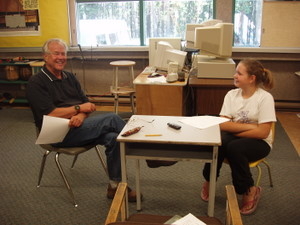
Tina: When you were a child, how did you get your food?
Dave: Well, over here on the island I used to only come over here in the summer time with my grandmother. And we used to stay down at her cottage and we used to get some of our food from some of the local farmers here. They weren’t big farms but they were small farms. We would get our vegetables in the summer time from them, that’s the only time I can remember. I don’t remember much beyond ten years of age, but when I was ten and twelve I used to go down to the rocks with my cousins and we would catch fish, we would catch rock cod off the rocks, off of our place, off of the Lawrence’s. We also used to get some salmon from Felix Jack, who was an aboriginal person across the Pass on Mayne Island on Helen Point. We used to get blackberries when they came out. Other than that, Eddie Bambrick used to have a store, and Stanley Page, who was the taxi driver at the time, would take my grandmother down to the store and get food from Eddie Bambrick’s store. I remember that. My grandmother would bring some over, but not a lot. We had dried foods like Kraft dinner from time to time – that was big! And my grandmother was a really spectacular cook, so we would have ham and things like that – does that answer your question?
Tina: Yes
Dave: Here’s some more….we would also get clams from the beach too, OK. At that age I wasn’t into oysters, so, clams I liked but I didn’t care for oysters. Now I do.
Tina: How would you get the clams? How would you find where they were?
Dave: Oh well they were on the beach in their little holes. You could just go down their at the low tides and in the summer time, when you have your low tides there were lots of clams on the beach then, you know Little Neck clams and Butter clams and not so much now, but then there were lots. And what we used to do is, we put them in a bucket with salt water and oat meal so that they would clean themselves. And then you’d eat them the next day. That was the theory anyway.
Tina: When you were young, how did you keep your food?
Dave: Well, there was no electricity, so my grandmother would sometimes get an ice box, and actually we had a boat house, and the boat house was over the water under a maple tree. There was a little attachment to the boat house, with screens on it, and it was out over the water, you know, on the high tides. At low tides, of course, it wouldn’t be. And it was cool because the maple tree shaded everything and there was an ice box, and she would get some ice, and I don’t know where she got the ice from. That would be stuck in the ice box and you would keep your butter there, keep your milk there, and all your perishables. There was a lot of them, but you would keep them there. That was how you used to keep them. So, you’d walk down from the cottage if you needed some more butter. There were no fridges. That’s how it was done. And the cooking was all done on a wood stove. We had a wood stove, there was no electricity like I said. But eventually we had an oil stove, and Mr Lorenz, who lived on the island and had the gas station at that time, would bring down a big 45 gallon barrel of stove oil, and we got pretty fancy with this stove – we had an oil stove!
Tina: How was getting your food different when you were a kid?
Dave: It was a lot different because you didn’t have anywhere near the selection. You didn’t have cold storage like you’ve got now. Although, I’m sure Eddie Bambrick did, he probably had a generator, but I don’t remember much about that, except that the variety wasn’t the same. You’d have ham because it was preserved, but if you didn’t catch your own fish, you didn’t have that. There wasn’t as much access off the island as there is now. It was a lot different. There were way more fresh vegetables when we got them from various places on the island. So, that’s how it’s different than now. Nowadays, we’ve got fridges, we’ve got freezers. We also had a cold storage, I should mention this too. We also had a cold storage on the north-east corner, where we would put apples and vegetables that don’t need to be kept really cool, but have to be cool, but not as cold as butter and all those other things. So,that would be kept, and I still have that. That’s where I…I guess I’m getting ahead of myself on the questions, but that’s where we still keep all our apples and stuff, over the winter now, and our fruit.
Tina: What was your favourite local food?
Dave: I like it all! I liked the clams, I like oysters, I like salmon, I like cod. I like apples from our apple trees, I like the lamb that we raise, I like the lettuce that we grow. I don’t know that I have one particular favourite food – I like it all. Sorry I can’t be more specific. I like everything. Arugula, we grow that, I like arugula in my salad.
Tina: Tell me about a food memory that you have from your childhood?
Dave: Well, I guess my favourite food memories were the pies that my grandmother used to bake, and the pastries that she used to make. It was amazing because she had this wood stove, and it was pretty hard to maintain, at least for us nowadays, yet she could cook unbelievably on that stove. She used to take the pies and and pastries and put them out on the window to cool, and my cousins and I would try and sneak more cookies, and we’d try to filch some when she was having a nap or something. They were blackberry and apple pies, and she used to make a German cinnamon roll which was really pretty good. That was my favourite memory. Also, we used to make some ice-cream the old fashioned way with salt, and real cream that wasn’t pasteurized, that I think she probably got from Allen Stewart’s farm. Then you’d spin that with salt, and bust up these blocks of ice. But that was only once a summer that we’d do that.
Tina: What seasonal foods do you eat?
Dave: I eat mushrooms, I eat lettuce and cabbage, we grow our own. We buy some too, but we do grow it. Garlic, carrots, peas, beans, we grown that and we freeze it for the winter. Kiwis, we grow kiwis.We grow grapes, but the raccoons get the grapes before I ever get them. Various types of apples – we’ve got 40 apple trees, so we have orange cox pippin, we have graven-stein, gala, newton pippin, grimes golden, transparent – those are the sort of foods that we have. I like it all.
Tina: How do you overwinter your food?
Dave: We have a freezer, a desiccator, which dries food. Sometimes we take the apples and dry them, and preserve them that way over the winter. We have a vacuum packer, so we vacuum pack a lot of our food. We vacuum pack our blackberries, freeze them first. You put them on a tray, put them in the freezer. They get hard, and then you vacuum pack them. If you do it when they’re soft, they squish, and you get nothing because of the pressure. So, things like fish, if we catch fish, which we do from time to time. We get crab, but we haven’t been very successful at getting prawns. We get them off Lloyd Baines when he gets prawns. But we do a lot of vacuum packing of our stuff because it preserves it longer. But my son and I, both, we go fishing from time to time to Renfrew or other places, and we catch our fish, and put it in the vacuum packer, and store it in the freezer. The freezer is big now. The other stuff, like the apples, I keep in the cold storage we talked about, and they keep right through. I actually made an apple pie four weeks ago from apples that I kept over winter. But you have to look at them regularly, because sometimes if they’re bruised when you put them in there they might rot, so you’ve got to make sure you take them out. You know the old saying, “one rotten apple ruins the barrel.”, you know what I mean. So you’re looking at them and checking them, and you shouldn’t put vegetables with certain apples because they give off certain gases, which problems in terms of deterioration. So, that’s sort of how we do it.
Tina: How and where do you shop for your food?
Dave: I shop on the island to some extent, I shop in Sidney sometimes, but I don’t do a lot of shopping for food. We have our lambs. We sell our lambs, but we always keep a couple for ourselves, and we both really like lamb. I catch a fair amount of fish, not as many as I used to but I still catch fish from time to time. I eat more vegetarian now than I ever used to. I get fish off Lloyd Baines, for example, and when I hear Lloyd has some prawns, I try and get some off Lloyd, so there’s a variety of ways to shop. And as I said, there’s clams, I dig for clams sometimes. I make a clam chowder or I’ll make a chioppino, you know, a clam fish dish and stuff like that. So I try to use a lot of natural stuff. I don’t like to buy too much from other places because I’m concerned….ours is all organic and we don’t use any pesticides or any fertilizer. We only use sheep manure for our fertilizer, and I’m a little nervous about the stuff they put on food today.
Tina: What are your favourite recipes?
Dave: I’ve got lots of recipes! Again, it’s like the question about favourite food. I’ve got a lot of favourite recipes. I like to make paella, which is a Spanish rice dish which has got prawns in it, it’s got clams, it’s got sausage in it. It’s a big rice dish, it’s got peas in it. It’s made in a big dish. I like clam chowder. My favourite lamb dish is a recipe from the Pink Geranium, which I don’t think you can beat. Every time I’ve served it to people, they go crazy! So, I’ve kept that and without a doubt, for me it’s just the most spectacular lamb recipe that you’re going to do on a barbeque. So, how did I choose it? One day I looked at it and it looked pretty good, so I tried it out, and it was fantastic. Although, my favourite way to have lamb is to barbeque a whole lamb. And I’ve done that from time to time for fund raisers – once for the Conservancy, and I’ve done it for the Rod and Gun Club, and I’ve just done it myself, where I just take to whole lamb, and just barbeque it on the spit. I’ve got a big barbeque for doing that. We put garlic inside the meat and rosemary inside the meat and make a oil with herbs, such as rosemary and basil and pepper, and also put salt inside the cavity of the lamb before I put it on. But there are lots of those dishes, and I like them all! I like to pan fry cod. You know, I’ve got a big recipe book that I’ve made over the years, from the newspaper, The Times Colonist, from other things, where I’ve seen something that looks good, so I’ll try it out to see if I like it, and if I do, I keep it, and then I’ll cook it. Another recipe, not my favourite, but it’s not bad, is an aboriginal recipe for clam chowder, which I think my dad got from Felix Jack. It is cooked with clams, seaweed, dulse and the green, and there’s usually a bunch of sand at the bottom, at the end of it. It’s a different kind of clam soup because they didn’t have milk, they didn’t have all kinds of other things to put in it, but it is really quite delicious.
Tina: How did obtaining food change for you when you moved to Galiano?
Dave: When I lived in town I had a bit of a garden, but I didn’t have the time, and I didn’t have anywhere near the garden I’ve got here. So, I grow way more of mu own food than I ever did. I tend to my apple trees, like I have to prune them, so I get apples, and blackberries and so on. I think I eat a whole lot healthier than I did before. Don’t go out for dinner like I used to go out for dinner,but I think that’s better for me. I think it is a real bonus in terms of what has happened to my diet, and food – and I like growing it, I get a kick out of it.
Tina: What foods make you think of Spring?
Dave: I guess, lettuce. It is something you can grow in the Spring and eat early. But I also think about other things like brussels sprouts and broccoli, because I plant my own seeds in my greenhouse to put in my garden. You think of a whole variety of things like that. And then this arugula I talked about. It self seeds, same with mustard grains which we grow, they self seed so we have some of that early on in the Spring, but when the weather gets warmer it bolts, so the spring foods are the ones that don’t bolt in the heat, and grow in the cooler weather. You think about tomatoes so you can get them growing for transplanting later. There’s a whole variety – Spring is one of my favourite times. And Fall is one of my favourite times, mainly because in the anticipation of planting and growing it, then in the Fall, not all of it, but then for some of it, harvesting it. Then your apples are there, your brussels sprouts, your broccoli can be done in early Spring too. Radishes are something to think about in early Spring. They grow easy and grow quick and they’re tasty. Also, in the Spring, oysters. It’s the best time to harvest oysters, in the months that have an “r” in them, so that’s January, February, March, April. After that they start getting milky. That’s when they start their reproduction cycle, so May, June, July, August, again you’re not eating many oysters. You start thinking about it again in the Fall.
Tina: What foods make you think of Summer?
Dave: Maybe, salmon. It used to be that we’d catch most of our salmon, the best fishing for salmon used to be between July 7 to the end of August. Sometimes you’d get winter springs, but they weren’t as big and they weren’t as predominant. We used to catch a lot of salmon in those summer months because the fish were moving through, feeding on herring.
Tina: What foods make you think of Fall?
Dave: Apples, kiwi, brussels sprouts of course, beans, scarlet runner beans, long green beans. I harvest them usually in the early Fall. Another Fall vegetable is a pumpkin.
Tina: What foods make you think of Winter?
Dave: Squash, and chard. Turnips, they’re not in the real winter, but just when winter is starting.
Tina: Why do they remind you of Winter?
Dave: I guess because that’s when you start harvesting them or storing them. It’s later on in the year when they’re ready. I used to get venison in the hunting season, so you think about deer at that time. I’m not a fan of venison, but my dad used to shoot them from time to time. Elk, moose, you get that in the Fall. I like all that kind of meat, because I have friends who do that and will give me some from time to time.
Tina: I ‘d like to go back to when you were talking about your garden. Did your grandmother have a garden?
Dave: Yes, she was a fantastic gardener. She had a great garden, so did my grandfather. He had a big orchard, not where we live now, but up at the end of Morgan Road, where they originally settled. They had chickens, cattle, a big orchard. And my grandmother was a spectacular gardener. I’ve got pictures, paintings of their place when they had it. So some part of my interest in gardening is through my grandparents. My dad loved to garden. I remember when I was a kid he grafted a tree that had four different kinds of apples, and they all came out at different times. That was in Vancouver, and that apple tree is still there today. It was still yielding when we sold it, and the people who bought it were delighted to have this apple tree. And we used to keep bees, and get honey. I haven’t done it here, well I was doing it, but the mites took out all my bees, and so I haven’t bothered with the bees. But I’m thinking of doing it again. We got all our honey ourselves from the bees. We used to take it out of the combs, and pour it through a cheesecloth and get the bits and pieces out of it. I guess that sort of farming, growing things was something that was in my family. We grew mushrooms for example, at different times. I grow asparagus. I guess that’s all how I got interested in doing this stuff.
We were talking earlier about how you keep foods. Well, I never did canning, but my grandparents did it, and my dad did it. I remember that they had a canner, which I still to this day have. I should have mentioned that, because last year I canned cherries, peaches. Some of the fruits like that that don’t keep as well, if you can them, in a low sugar mixture, well, we’ve had cherries and peaches all winter through that. But my grandparents used to can with cans, not jars – we can with jars now – and they would can with tin cans. And I’ve still got all this equipment, I don’t have the cans anymore, or the lids, and they would do that. They had quite a big Bur-pee canner. In that canner I can probably can about a dozen jars at a time. I used to can my salmon a lot too. I don’t do that as much now because of the freezer, and because of the vacuum packer, but I still from time to time will can salmon, and I’ve probably got about a dozen jars of canned salmon still in my big highboy cupboard that I have. So we do can. There’s a variety of ways in which you keep stuff. I like salmon better canned than I do frozen because a of of times, even when you put it in the vacuum pack it’s a little better, but a lot of times it gets freezer burn. So I just love to have a jar of canned salmon.
Tina: My dad used to can salmon too. I’d put a cracker in it with some cream cheese with the canned salmon…
Dave: Well you can’t beat it can you! And the other thing I’ve done, is I’ve smoked salmon. OK, and there’s two ways of doing it, hot smoke and cold smoke. I don’t do the cold smoke because I’m not skilled enough to do that, and you have to be very careful doing that. But I’ll do a hot smoke and sometimes I’ll take a piece of hot-smoked salmon and put it in the salmon I’m going to can. Now you only need a small piece and it pervades the whole jar of salmon, so you’ve got smoked salmon in the jar, which is pretty good on a cracker too. That’s the way people used to do it. That’s how they did their preserved stuff.
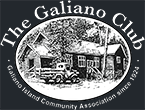
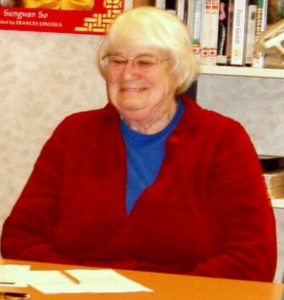 “I do have a food memory, and it’s about lack of food. I was a child in the 1930’s when there was a nasty depression, as we’re having a recession now as they call it. But then it was The Great Depression.
“I do have a food memory, and it’s about lack of food. I was a child in the 1930’s when there was a nasty depression, as we’re having a recession now as they call it. But then it was The Great Depression. Depression Kid
Depression Kid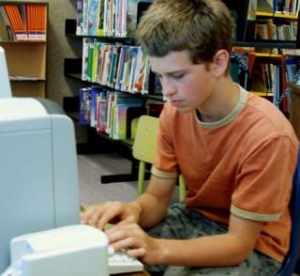 Jacob: When you were a child, how did you get your food?
Jacob: When you were a child, how did you get your food?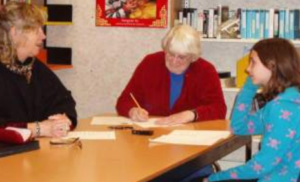 When you were a child how did you get your food?
When you were a child how did you get your food?